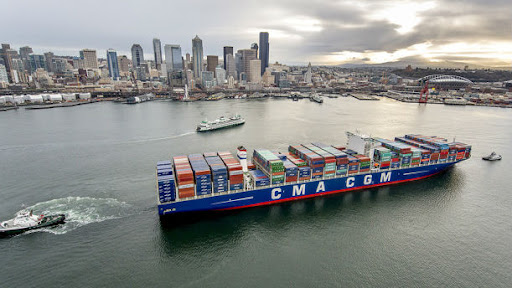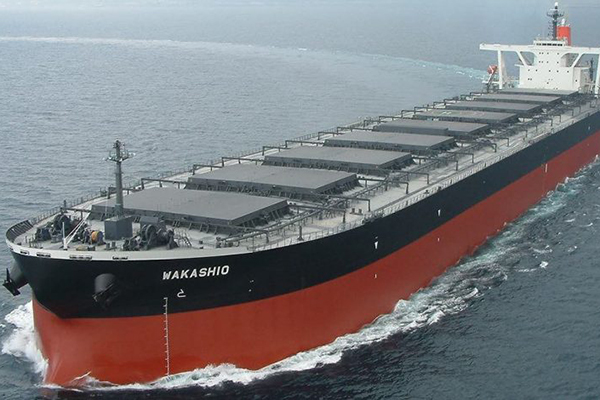
In 2020, the marine economy accounted for $361 billion of U.S. gross domestic product (GDP) and $610 billion of gross output. Moving goods by sea is considered the most efficient form of commercial transport, and the carbon footprint of maritime shipping is substantially lower, per ton of cargo, compared with rail, truck, and air transport. But these ships still require large amounts of fuel and, despite safety improvements, there is always the risk of significant oil spills. As cargo ships continue to get bigger and carry more containers, they also carry more fuel for propulsion. The vast majority of ships use petroleum oil, although there is an increasing use of alternative fuels. And while individual cargo ships don’t carry as much oil as tankers and tank barges, these fuels are also stored, transported, and distributed in large volumes before being loaded as fuel.
Maritime commerce began under sail and then coal, but for the past century, most large vessels have used heavy fuel oils (HFOs) or intermediate fuel oils (IFOs). HFOs (sometimes called residual fuel oils, or RFOs) are from the “bottom of the barrel”—they are residual products after more valuable diesel- and gasoline-range hydrocarbons are removed during the refining process. These viscous tar-like fuels are inexpensive, but have notoriously toxic emissions of sulfur dioxide and other air pollutants, and are also difficult to clean up when they are spilled. HFO tends to be very sticky and persistent in the marine environment if spilled; only a small fraction will evaporate or disperse. IFOs are a variant of HFOs, made by blending HFO with diesel-range hydrocarbons to get desired viscosity and other characteristics.
Over the past decade, the governing body of international shipping (the International Maritime Organization, or IMO) has begun requiring cleaner fuels, with less harmful effects on the environment and human health. There are a growing number of options for alternative fuels and technologies for greener shipping, including liquefied natural gas (LNG), biofuels, and even sail assist, but the blue economy still relies heavily on petroleum-based fuels. What are the fuels that drive the blue economy? And what are the response and damage assessment implications of spills of those fuels?
On Jan. 1, 2020, the IMO announced new requirements known as IMO 2020, which mandated a maximum sulfur content of 0.5% in marine fuels globally, compared to the previously permitted sulfur emission level of 3.5%. Ships operating in designated emission control areas (most coastal areas of North America and Europe) must continue to meet even more strict sulfur emission levels of 0.1%. Many large ships now use very low sulfur fuel oil (VLSFO) and marine gas oil (MGO).
As a practical matter in the U.S., ultra low sulfur diesel (ULSD), with only 15 ppm (0.0015%) or less of sulfur, was mandated for use in most vehicles, boats, and machinery in December 2010.
In early 2023, the U.S. Government released a “blueprint” on the decarbonization of America’s transportation sector, including maritime shipping. This built on the decarbonization goals of the IMO to set targets for new energy-efficient technologies as well as promoting research and innovation on alternative fuels. Among the blueprint’s goals will be ensuring that five percent of the global deep-sea fleet can run on zero-emission fuels by 2030, which will undoubtedly promote the adoption of more new fuels that OR&R is preparing for.

We know that there will be spill incidents involving these new fuels. The first major spill of very low sulfur fuel oil was from the M/V Wakashio in June 2020. The vessel ran aground on a coral reef on the southeast tip of Mauritius, in the Indian Ocean, unleashing a vast oil spill. Thousands of people, including local fishing communities and volunteers, were exposed to the toxic components of the oil spill. It contaminated the food system and polluted the island’s beautiful landscapes.
Response specialists from NOAA were part of the global response, coordinating technical assistance remotely to the Mauritius Ministry of Environment, as requested through the U.S. Department of State. The NOAA team provided satellite imagery and assessment, assisted organizations in Mauritius that were using NOAA’s GNOME suite of spill modeling tools to model the movement of the spilled oil on the water surface; provided response and natural resource guides; and shared guidance documents on conducting natural resource damage assessments for reef environments.
Responders are learning how these new fuels will behave compared to the higher sulfur fuel oils that they are familiar with. In 2022, OR&R received funding to create a fact sheet for these low sulfur fuel oils, similar to others in its collection of oil fact sheets, to better equip spill planners and responders in their work.
The lower sulfur fuels are better for air quality, but industry and government research is still underway to look at the implications of these new oil types over a range of environmental conditions. Canadian and Norwegian researchers are looking at oil response in cold climate/arctic conditions, as well as more moderate temperatures.

Most spill response technologies, such as booms and skimmers, are designed around the primary physical-chemical characteristic of oil—factors such as density (will it float?), viscosity (how sticky is it and how easily does it spread?), pour point (can it be pumped at normal temperatures?), volatility (can it be safely burned?), and solubility (will it disperse?).
Because these oil characteristics vary among crude and refined oils, we maintain an extensive oil library. The ADIOS Oil Database is designed to support oil spill response and oil spill preparedness operations through a compilation of publicly available oil assays, which are combinations of physical and chemical data that uniquely describe or characterize oil.
This information can be directly imported into our oil spill models and tools. OR&R has general response guidance for different classes of oils, along with fact sheets created for spill planners and responders that provide technical information about the characteristics of different oils, their behavior when spilled, and their effects on wildlife, plants, and habitats.
The International Energy Agency projects that the demand and production for these emerging fuels will continue to increase through 2050 based on global emissions strategies, while demand for traditional fuel oils will likely decrease over the same period. OR&R is looking ahead through workshops and focused projects to prepare for responses to future spills. As we gain more experience with these new fuels, we continue to update and share our knowledge.
